(“Metrics that Matter” is a short feature that appears every Tuesday, Wednesday, and Saturday, highlighting a notable fantasy lesson to be learned from PFF’s advanced stats.)
I much prefer the NFL’s playoff system to that of the NBA. Sure, I understand the argument that in the NFL it’s easier for lesser-quality teams to sneak into the playoffs — the 2010 Seahawks made the playoffs with a 7-9 record and a -97 point differential — but I like that divisional games are worth more in the current system. I love that the league is rife with heated divisional rivalries. Perhaps my opinion might be different if I were a fan of a non-Patriots AFC East team, but I’m not, I’m a Giants fan. I love the Giants, and I hate the Eagles, and I love hating the Eagles.
The NFC East has also been one of the most uniquely balanced divisions in the league over the past decade or so. If the Redskins had won the division last year (instead of the Cowboys), each team would have three division titles over the past 12 seasons. Dating back to 2004, no team has won the division in back-to-back years.
Knowing you’re going to play two games per season against the same three teams every year (and knowing these games are worth more), I wonder how much a team’s player-acquisition decisions are influenced by the rosters of the remaining teams in the division. Was the acquisition of Josh Norman in Washington a counter to New York’s Odell Beckham Jr. and Dallas’ Dez Bryant? Was New York’s signing of Brandon Marshall a counter to that? If it was, I wouldn’t blame them for feeling the need to add a reliable option outside of Beckham — Norman is one of the best shutdown cornerbacks in the league.
Over the past three seasons, Norman ranks second-best in opposing passer rating and yards allowed per snap in coverage — the two metrics I look at first when evaluating cornerbacks.
Opposing passer rating
Yards per coverage snaps
Not only is Norman one of the toughest cornerbacks in the league, but he is a disruptive force that each opposing offense needs to carefully game plan against. We know Norman will shadow top wide receivers in 2017. So I asked myself two questions: From a fantasy perspective, what does Josh Norman’s presence mean for Odell Beckham Jr., Dez Bryant, and Alshon Jeffery? And from a game-planning perspective, how should each team try to attack Norman?
Knowing that Norman is likely to shadow Beckham, Bryant, and Jeffery twice each this season, I decided to compare each wide receiver’s effectiveness on each route (over the past three seasons) to how Norman has historically fared by each route. Each chart is sorted by Norman’s “worst” routes – which are determined by passer rating allowed (opposing passer rating when targeted) over expected passer rating allowed (average passer rating allowed of all cornerbacks on each route).
Consult this route tree when looking at each chart below:
Odell Beckham Jr.
You don’t need me to tell you, but Beckham is a freak and has likely strung together the best first three seasons we’ve ever seen from a wide receiver. No wide receiver has ever averaged as many PPR fantasy points per game over his first three NFL seasons as Beckham – and he paces the runner-up (Randy Moss) by more than two fantasy points per game.
On a per-route basis, he is above average everywhere except on Go and Corner routes. Meanwhile, Norman’s three best routes are deep routes (somewhat surprisingly given his 4.66 40-yard-dash at the combine in 2012) – Go, Corner, and Posts. For this reason, among others, if I were Eli Manning I’d consciously avoid targeting Beckham when he is shadowed by Norman on deeper routes. Instead, I’d look to target Beckham on shorter and more intermediate routes.
On 19 career targets against Norman, Beckham totals 12 receptions, 146 yards, and one touchdown. For Beckham’s standards that’s good. For Norman’s standards, this is unbelievable. Over the past three seasons, no other wide receiver with at least five targets against Norman sports a WR rating over 82.5 This stat line equates to a 104.3 WR Rating for Beckham.
The common narrative is that Norman is “inside Beckham’s head.” That was likely the case in their first meeting where Beckham dropped two passes (totaling 49 yards in the air) against Norman (Beckham had only four drops on 266 targets prior to this game) and was eventually suspended for “on-field antics” related to unsportsmanlike actions taken against Norman in this game. However, it appears Beckham is Norman’s archrival for a reason, in that no wide receiver has been anywhere near as productive against him over the past three seasons.
From a fantasy perspective, against Washington, I’m still starting Beckham in redraft leagues, but am wary in DFS.
Dez Bryant
Over the past three seasons, Bryant has run 68 routes against Norman. On those routes, Bryant has totaled 12 targets for just 38 yards and no touchdowns. Looking at the above chart, it’s clear to see why. Bryant has struggled with injuries and poor quarterback play (2015) over this stretch, but really has only been especially efficient on “Out” routes – Norman’s fourth-best route.
Bryant did get the better of Norman on this specific play, but wasn’t targeted. Though this is another thing that makes Norman special. Outside of just looking at Norman's success on a per-target basis, how frequently a cornerback is thrown at is another representation of a corner's skill-level. Among all 83 cornerbacks to see at least 750 coverage snaps over the past three seasons, only nine cornerbacks were targeted less frequently than Norman. Bryant likely wasn’t one of Prescott’s first reads on this play, and I wouldn’t blame him for not looking at his way, given track record. By track record, I don’t just mean Bryant’s success against Norman, but against elite cornerbacks in general. This isn’t hyperbole — in terms of fantasy points, Bryant has been the most cornerback-sensitive wide receiver in the league on both a per-route and per-target basis.
On a per-target or per-route basis, Dez Bryant has been the most cornerback-sensitive wide receiver over the past three seasons. pic.twitter.com/RwiHBXy3Xc
— Scott Barrett (@ScottBarrettDFB) June 29, 2017
If I’m Dallas here, I’m avoiding Bryant and looking at secondary options. Washington allowed 4.52 yards per carry to opposing running backs last season — fourth-worst in the league. Running back Ezekiel Elliott ranked third-best in yards per carry (5.06) among all running backs with at least 150 rushing attempts. Washington also allowed the fifth-most fantasy points per game to opposing wide receivers running routes from the slot last season, which bodes well for Cole Beasley (85.4 percent of his routes from the slot).
From a fantasy perspective, I’m still likely not benching Bryant in redraft leagues, but there’s no way I’ll be playing him in DFS.
Alshon Jeffery
Going back to my aforementioned point about teams making offseason decisions based on opposing players within their decision, perhaps Jeffery was signed by Philadelphia to be the perfect counter for Norman. Jeffery’s three best routes are also Norman’s three worst routes. I’m not sure this is just a coincidence. Unlike with Bryant, I’m less hesitant about Philadelphia going out of their way to target Jeffery when shadowed by Norman, though I’d recommend they stick to shorter and more-intermediate routes in this matchup. The data here certainly bodes well for Jeffery.
From a fantasy perspective, I’m still starting Jeffery in redraft leagues and am cautiously optimistic in DFS if the salary is attractive.
Finally, here’s a list of all wide receivers to see at least five targets against Norman over the past three seasons, sorted by total targets. As you can see, Beckham leads in WR rating and Jeffery leads in yards per target, while Bryant ranks near the bottom in both categories.

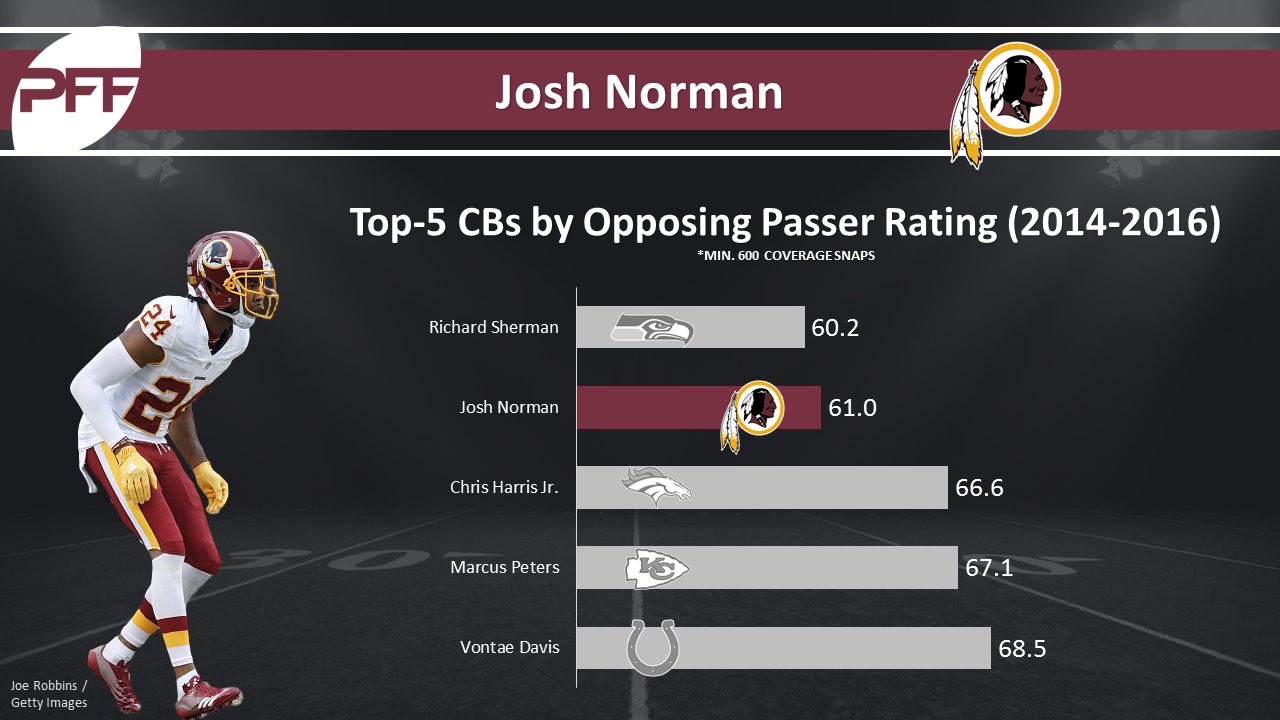
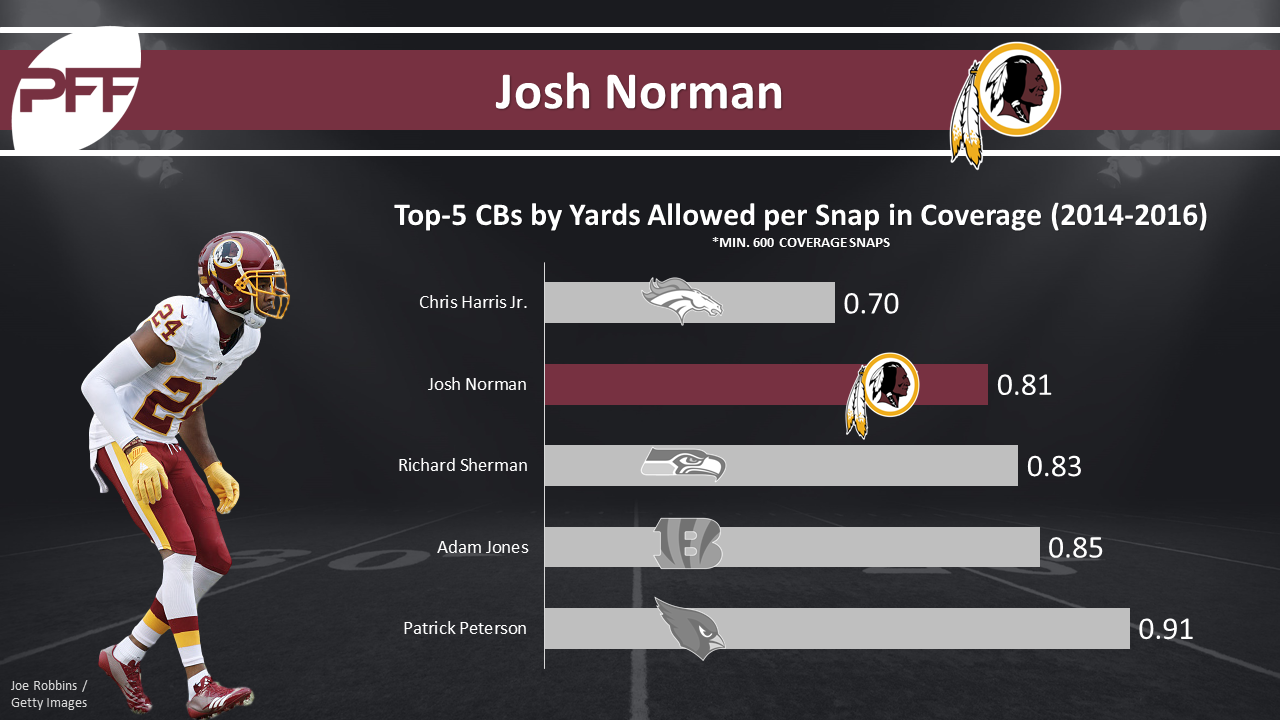
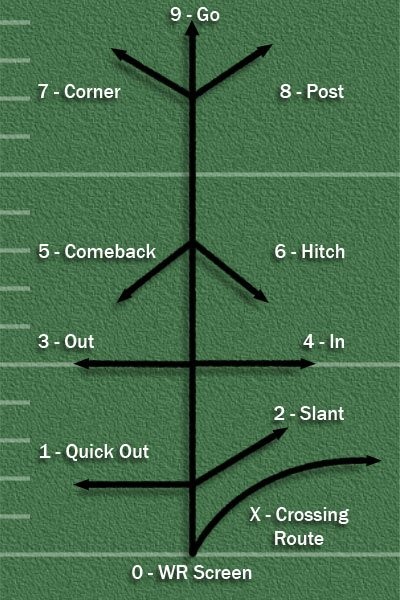
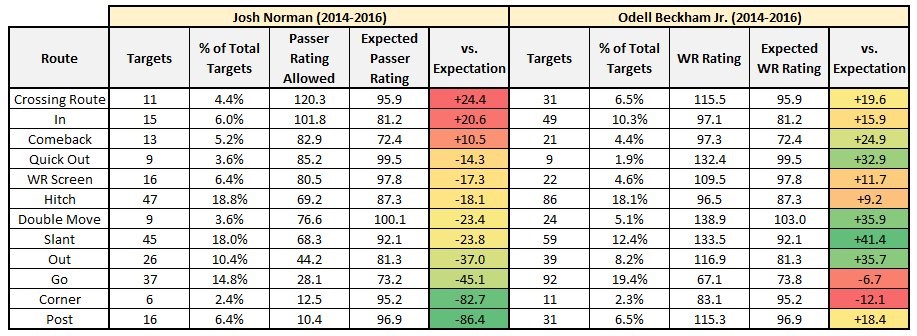
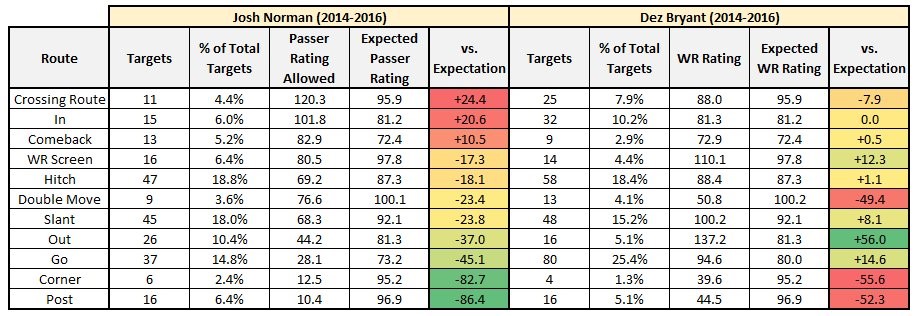
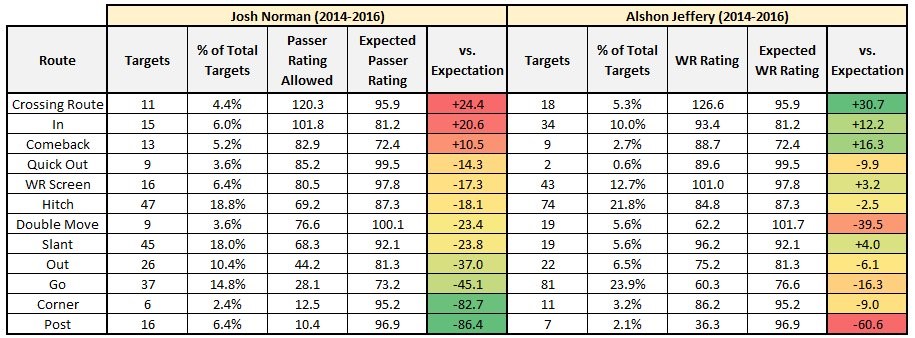



 © 2024 PFF - all rights reserved.
© 2024 PFF - all rights reserved.